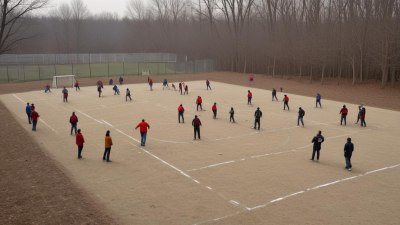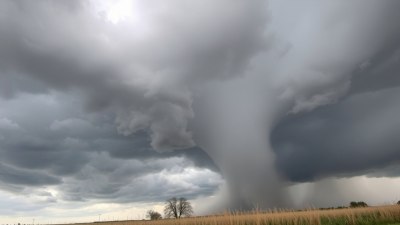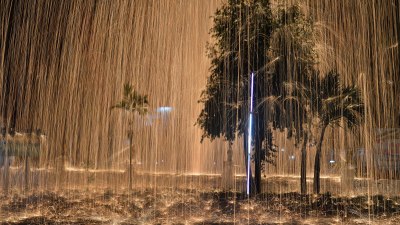Why Every Outdoor Game Becomes Competitive When It’s Not Too Hot
Explore how comfortable weather enhances competition in outdoor games.

This image was created with the assistance of Freepik
Outdoor games have been a staple of human recreation for centuries, allowing individuals to engage, socialize, and challenge one another. The dynamics of competition are fascinating, especially when considering environmental factors. One prevalent observation is that outdoor games become significantly more competitive when temperatures are comfortable. In this article, we will explore the reasons behind this phenomenon, delving into aspects such as physical performance, psychological effects, social dynamics, and overall game experiences.
To begin our exploration, it's crucial to define what constitutes 'not too hot.' While preferences may vary, a conservative estimate would place comfortable outdoor temperatures between 60°F (15°C) and 75°F (24°C). This temperature range allows players to perform optimally without fear of heat-related issues such as dehydration or heat exhaustion, which can diminish the competitive spirit.
Physical Performance
Physical performance is undoubtedly a significant aspect of competitiveness in outdoor sports. When temperatures skyrocket, the body experiences several physiological changes to regulate its core temperature. This process can lead to fatigue, reduced endurance, and impaired motor skills—all of which negatively impact performance. However, during moderate weather, players can maintain their energy levels, making them more inclined to push their limits and compete fiercely. Players are likely to run faster, jump higher, and think clearer when they do not have the added burden of excessive heat.
Desire to Engage
Another factor contributing to increased competitiveness during pleasant weather is the sheer desire to engage in physical activity. When it’s too hot, many people are less inclined to venture outdoors, let alone engage in competitive games. In contrast, moderate temperatures create an inviting atmosphere encouraging people to gather, play, and challenge one another, thereby fostering a competitive environment.
Social Dynamics
Outdoor games often hinge on social interactions. In cool weather, players can focus on the competition without the distractions that heat can bring, such as sweaty discomfort or the need for constant hydration breaks. The social bonding that occurs among participants feeds a competitive spirit, as friendly rivalries can emerge, and teams rally behind their shared goals. Such camaraderie strengthens their commitment to competitive play, elevating the level of engagement and enjoyment.
Psychological Effects
The psychological effects of weather on competition are also noteworthy. Research indicates that people tend to be more motivated and focused in comfortable climates. This aspect potentially enhances decision-making and strategic planning, granting players an edge over their opponents. In addition, the pleasant atmosphere may heighten emotions such as enthusiasm and excitement, which can further intensify competitive nature.
Injuries and Safety
Safety is another critical aspect influencing the competitive nature of outdoor games. Hot weather can increase the risk of heat-related illnesses and injuries; players may conserve energy, knowing that over-exertion can lead to dangerous outcomes. Conversely, cooler temperatures mitigate these risks, allowing players to fully engage and embrace the competitive aspect of the game without the fear of endangering their health.
Increased Participation
When outdoor games are played in comfortable weather, attendance increases. More participants mean more competitors, which naturally elevates the competitive atmosphere. The more people there are playing, the more significant the stakes can become. With larger groups, players tend to bring their A-game, knowing that they are likely up against more formidable opponents.
Variety of Games
The range of outdoor games played during pleasant weather can also contribute to a competitive environment. Outdoor spaces can accommodate different games—from soccer and basketball to ultimate Frisbee and beach volleyball. With more options available and increased participation, competitive play rises across the board as individuals seek to showcase their skills in various sports.
Event Culture
Certain events and tournaments are often scheduled to coincide with the optimal outdoor temperatures. Organized competitions in comfortable weather can draw larger crowds and enhance the competitive nature of the game, as players aspire to outperform each other amidst an audience. In this context, the excitement that comes with formal competition often results in a heightened sense of rivalry, refining individual and team performances alike.
Community Engagement
Community events, charity games, and local tournaments are frequently organized during ideal weather conditions. These events, designed to encourage participation and support local causes, tend to foster an atmosphere of competitive spirit. Players engage not only to win but to represent their communities and build connections through competition. As a result, participation in outdoor games during moderate temperatures becomes a chance to bond and create memorable experiences.
Transition Seasons
Season transitions, such as spring and fall, offer a unique environment where comfortable temperatures may prevail for extended periods. During these transitions, outdoor games flourish as players revel in the invigorating atmosphere. Nature’s beauty, coupled with mild weather, enhances the competitive experience as individuals are more likely to feel energized and focused.
In summary, many factors contribute to the increased competitiveness of outdoor games when temperatures are not too hot. From enhanced physical performance and psychological effects to social dynamics and increased participation, delightful weather creates an ideal environment for competition. Players can truly excel in their respective outdoor games, showcasing their talents and reinforcing bonds. It’s a beautiful paradox that underscores the connection between nature and recreation, revealing how simple climate conditions can profoundly influence our competitive nature.










